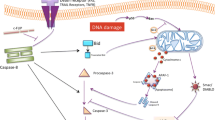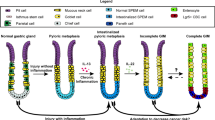Abstract
Normal function of the p53 gene is integral to the cellular response to genotoxic stress. One prediction arising from this is that p53 deficiency results in an increased mutation frequency. However, limited evidence has been produced in support of this idea. In order to further investigate the in vivo role of p53 in surveillance against mutation, and particularly to address the significance of p53-dependent apoptosis, we scored mutation frequency at the Dlb-1 locus within cells of the intestinal epithelium of animals which were wild type, heterozygous or null for p53 and heterozygous (a/b) at the Dlb-1 locus. Using this assay we have shown that loss of a p53-dependent apoptotic pathway is associated with the detectable acquisition of mutations, but only at high levels of DNA damage. These results question the significance of the immediate `wave' of p53-dependent apoptosis seen in this tissue, particularly as there was a delayed p53-independent apoptotic pathway. We conclude that loss of p53 function only becomes relevant to the in vivo acquisition of mutations and thus tumorigenesis in certain circumstances.
Similar content being viewed by others
Author information
Authors and Affiliations
Rights and permissions
About this article
Cite this article
Clarke, A., Howard, L., Harrison, D. et al. p53, mutation frequency and apoptosis in the murine small intestine. Oncogene 14, 2015–2018 (1997). https://doi.org/10.1038/sj.onc.1201040
Received:
Revised:
Accepted:
Issue Date:
DOI: https://doi.org/10.1038/sj.onc.1201040
- Springer Nature Limited
Keywords
This article is cited by
-
New insights into negative effects of lithium on sea urchin Paracentrotus lividus embryos
Scientific Reports (2016)
-
53BP1 deficiency in intestinal enterocytes does not alter the immediate response to ionizing radiation, but leads to increased nuclear area consistent with polyploidy
Oncogene (2007)
-
Mouse models with modified p53 sequences to study cancer and ageing
Cell Death & Differentiation (2003)
-
Heterozygosity for p53 promotes microsatellite instability and tumorigenesis on a Msh2 deficient background
Oncogene (2002)
-
The ability to engage enterocyte apoptosis does not predict long-term crypt survival in p53 and Msh2 deficient mice
Oncogene (2002)




